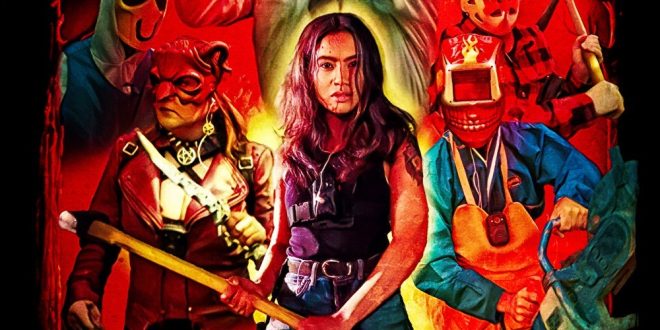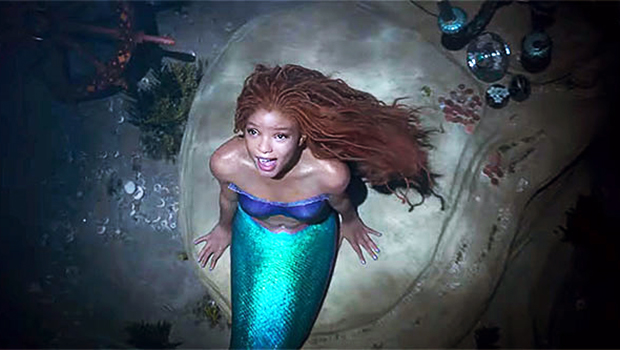It’s that time of the year again where “The Simpsons” gets spooky. “Treehouse of Horror XXXIII” premiered this past Sunday night and with it came three spin-tingling tales set within the world of the longest-running animated sitcom.
First up, comes a segment clearly inspired by the talented Jennifer Kent’s The Babadook. Taking on a new form as “The Pookadook,” Marge reads Maggie a twisted children’s book that eventually summons a spectral creature. Much like the original film, the spirit of The Pookadook possesses Marge, driving her to try and kill Maggie in a deadly game of cat and mouse.
This segment features a lot of great visual gags, like the Pookadook shadow appearing behind Marge when she walks around, Maggie maneuvering around furniture to evade Marge’s deadly attacks, and the design of The Pookadook book itself. It’s nice to have a “Treehouse” segment that mainly revolves around the relationship between Maggie and Marge. There’s a wonderful mother-daughter moment towards the end that really enforces the bond between the duo that we’ve seen play out these last 30 or so years of the show’s run.
If there’s a downside to this segment is that it’s cut short way too soon. A common issue among past “Treehouse” segments is the limited runtime. Having to squeeze three unique stories into a tight 30 minute runtime is not an easy feat. It would’ve been neat to see more of The Pookadook in its physical form, as opposed to just seeing it as an eerie black silhouette.
The next segment, and arguably the most talked about online, is “Death Tome,” a clear homage to the iconic Death Note manga. The entire segment is animated just like an actual anime, incorporating Simpsons iconography with a beautiful stylistic approach. Taking many of the beats from the original manga, this segment sees Lisa come into possession of the infamous notebook which allows her to kill anyone whose name is written in the book. With the notebook comes the manifestation of a version of Ryuk, this time terrifyingly named Steve Johnson.
In an attempt to thwart Mr. Burns’ “Globo-Warm” project, Lisa desperately tries to off all of the employees involved in the ice-cap melting initiative. Through her killing spree, audiences are treated to a wonderful montage of anime-style death sequences ranging from failed parachutes to jammed tanning beds (Final Destination style). The chaos reigns on all while Steven Johnson offers guidance and malicious encouragement to Lisa. The character design, and animation as a whole, is simply breath-taking in this segment.
The narrative reaches its finale when it is revealed that Bart has uncovered Lisa’s sinister secret. Left with no choice but to either face exposure or kill her own brother, Lisa makes a game-time decision to write Steve Johnson in the Death Tome. For a moment this seems to work, finally ridding herself from the malicious spirit. Seconds later, Lisa grotesquely transforms into a creature herself, doomed to be a God of Death for all eternity. Bart and his ghoulish-looking sister Lisa walk off into the sunset in one of the show’s most stunning animated images to date.
The last segment, and arguably the best, is “Simpsonsworld,” a clear play on “Westworld.” Starting off with a clip from one of the most famous Simpsons episodes, “Marge vs. the Monorail,” the throwback sequence is interrupted by eager Simpsons fans poking at the Homer character in the middle of the scene. It’s revealed that this is one of many re-enactments at a vast, Simpsons-themed amusement park featuring animatronic versions of almost every single Springfield character and iconic show gag. The segment dives even deeper meta-wise when one of the Homer animatronics regains consciousness and realizes he is a robot in an amusement park. What follows is a hilariously macabre, and reference-filled, adventure through the world of “The Simpsons.”
The Homer robot awakens versions of the rest of the Simpsons family, choosing not to awaken a Grampa character during a quick gag. Every frame of this segment is filled to the brim with nostalgic “Simpsons” imagery including Whacking Day Homer, an army of Ralph Wiggums saying “I Choo Choo Choose You,” and the iconic Homer slipping into the hedge meme that ends up being repurposed as a murderous shrub that liquidates those who are consumed by it.
The animatronic version of the family drives a vehicle through the twisted amusement park (crashing into the “Turn Yourself into a Simpson” machine) and escapes the prison – only to arrive at a seemingly normal burger joint. In a surprise out-of-left-field twist this restaurant turns out to be the one from Fox’s other animated series “Bob’s Burgers,” as Linda Belcher (voiced by John Roberts) shows up to take the Simpsons family’s order.
If fans were shocked by the “Burgers” crossover, they’re only given minutes to recover as in the episode’s final moments it zooms out to reveal The Simpsons are now trapped in BOB’S BURGERS LAND, which sits in a vast wasteland next to other giant domes with various pop culture names: RICK AND MORTY WORLD, FAMILY GUY TOWN, and even SOUTH PARK PARK.
What makes this segment so great is that “The Simpsons” is absolutely perfect for a meta-story about television characters realizing they are intellectual properties. Much like the recent, and amazing, “NOT IT” standalone “Treehouse of Horror” installment that spoofed Stephen King’s IT, “Simpsonsworld” could have very well been its own episode.
Overall, “The Simpsons” continues to entertain with these ghoulish installments each year. While the limited runtimes often cut the coattails off of many of the segments, the creativity and unique approach to each of these mini tales of terror never fails to please.




















































































